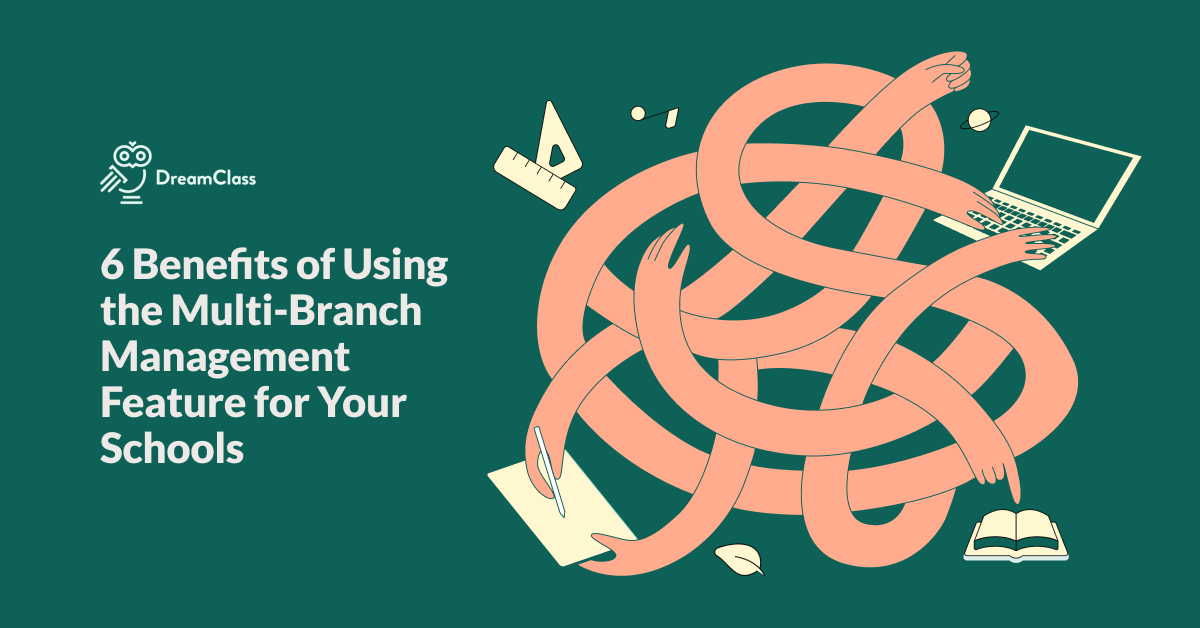What is a Student Information System (SIS)
There has been an upsurge in the edutech sector over the last years. Plenty of software solutions designed to serve the needs of a wide range of schools and educational institutions have been placed on the market. The majority of such solutions are focused not only on resolving or further improving a wide range of practical administrative issues and internal processes, but also on supporting and promoting schools’ goals and objectives. Edutech solutions display considerable variation asserting the broadness and diversity of products in the category they fall into. Student Management Software (SMS), Student Information Management Systems (SIMS) and Student Records Systems (SRS) are only some of them. However, the most representative category is typically that of a Student Information System (SIS).
What is a Student Information System (SIS)?
A Student Information System (SIS) is basically a software solution that enables educational institutions to digitize and consequently manage student information more efficiently. More specifically, it’s a system that allows educational institutions of all stripes to make all student information — that was previously stored in legacy systems — available online. In doing so, they manage to automate related administrative and academic processes, thus making them much more efficient. On top of that, they also succeed in supporting students’ needs — both inside and outside the classroom — in the best possible way.
How does a Student Information System work?
With a Student Information System, schools, academies and educational institutions of all sizes are able to perform a nearly exhaustive list of tasks much more efficiently than they would do without it. Registering students to classes, forming timetables, tracking attendance and storing performance records — such as grades and assessments — are only a subset of the tasks and processes that can be facilitated with such a system.
Student Information System features that facilitate key school tasks and processes
As noted, a Student Information System offers educational institutions all the functionality they need to automate processes and tasks. This automation helps support and promote students’ educational paths from day one, till graduation. Though this final step refers to the case of higher education institutions, it’s with the help of a SIS that different types of schools finally manage to deliver quality studies to their students.
The functionality offered with a Student Information System helps manage different aspects of an educational institution; in a highly organized way, no less.
That goes to say, everything becomes much more efficient; from administrative and organizational operations, to processes related to student activities and teaching responsibilities. Provided, of course, that the Student Information System incorporates the right combination of features.
However, it’s worth mentioning, here, that some of the features included with a SIS platform can also be found as stand-alone solutions. As a matter of fact, that applies to a large portion of them. For example, there may be cases of schools, academies and educational institutions that may choose to use an admissions system, an attendance tracking system and a scheduling software in parallel, to cover their needs.
In the same fashion, there are plenty of edutech solutions in the market, developed to cover specialized needs for specific categories of schools and educational institutions; such as K-12 software, music school software, swim school software etc.
A quick Google search may return plenty of relevant solutions that match the aforementioned cases. But, the truth is, a well-organized and feature-rich Student Information System supports and promotes school autonomy. And, as such, it usually comes with a list of features that can facilitate the processes described below:
1. Program management
Program management (or curriculum management) refers to the processes required to shape a learning path for students, within the educational organization. With program management, schools outline what students are expected to learn. These learning goals and educational expectations are, most of the time, represented as courses; organized in the different levels of classes. Organizing that program structure consists of a series of demanding steps, such as making decisions, as to which core courses should be added in the curriculum; representing the curriculum in a coherent way and further modifying it, if needed.
A Student Information System helps educational institutions proceed with the aforementioned process in a much more efficient way. More specifically, principals — or any member of the head staff — responsible for school management is able to represent the hierarchy of classes within the Student Information System with only a few clicks. In the same fashion, they are then able to distribute courses to classes and finish up program structuring. All in all, program management functionality helps schools create the base upon which they build a structure that allows them to organize and perform a long list of administrative and educational tasks.
2. Student management
Student management lies at the heart of school administration. A structure that allows administrators to easily store, retrieve and work on student data is of paramount importance for all educational institutions; regardless of their type or size. The aforementioned process is feasible either by making use of tools that incorporate that functionality or by creating the relevant structure from scratch.
Indeed, managing student information efficiently is all about organizing and storing student information the right way. School administrators need to be able to handle such processes easily without any hassle at all.
Managing student data with an SIS
With a Student Information System, administrators are able to store student information, preferably in the form of online student profiles. More specifically, they can fill in structures, adding all the relevant personal information; such as birth date, along with contact details. Thus, creating detailed student profiles for the students they enroll.
Once this process is complete, they are able to use their time for core academic tasks, such as registering students to the current school period and the classes they wish to attend. In a similar fashion, they’re also able to charge students with tuition fees, linking that information with their student profiles; enabling the school to issue and handle the respective invoices.
All in all, processes that would typically demand a host of steps to completion — especially when using legacy systems — are now available to complete in a few clicks. With DreamClass, for example, administrators can import student records using CSV files, if needed; creating, this way, the respective profiles in seconds. In addition to this, they’re also able to massively register students from past school periods to a new one, with a few clicks. In a similar fashion, they’re able to filter student records and view the information they need, the moment they need it. To illustrate, they can filter different types of data, whether that is student contact information, notes pertinent to specific student profiles, reports on student tuition payments, and so forth.
3. Timetable management
Timetable management is, by far, one of the biggest challenges school administrators are faced with. Take, for instance, the case of a school that gives students the option to choose whichever subjects they prefer, based on their interests. The challenge here, for the person that creates the bell schedule, is to make sure students will be able to attend lessons without any clashes in their timetables. In a similar fashion, timetable management should also take faculty availability into consideration. To explain, administrators responsible for timetable management should make the most out of teachers’ time, eliminating the need to schedule additional classes. Obviously, all the aforementioned parameters burden administrators further. That goes to say, they need to be able to make changes necessary to ensure that both students’ and teachers’ needs are properly met.
With a Student Information System, schools are able to create and share their timetables online. In particular, the whole process becomes much more efficient when administrators — or any other role responsible for that task — have ready-made structures that allow them to represent a wide range of recurrent patterns (course/educational components) at their disposal.
More specifically, they usually only need to fill in the start time and duration of the lesson; and then, simply decide on the recurrence of that lesson, throughout the school period. In DreamClass, for example, users are able to create one-off or recurring lessons, in only a few seconds. On top of that, they’re also able to centrally manage different versions of schedules; and have each version automatically shared with specific groups of students.
4. Attendance Management
Another core administrative process that educational institutions have to deal with on a daily basis is attendance management. This repetitive process of tracking students’ attendance accurately and efficiently on time is of great importance; for the majority of schools, at least. Especially when students are young children and school is held accountable for students’ safety and well-being. In a similar fashion, tracking and managing attendance data the right way is very important; especially when attendance records are used to calculate or make adjustments to the tuition fees.
When attendance tracking and management are performed manually or with the help of legacy systems, there’s no doubt that they take longer. Consequently, such laborious processes burden both administrators and teachers with extra hassle; and keep them away from core duties they are responsible for. Not to mention, from other administrative tasks and teaching accordingly.
With a Student Information System that incorporates attendance management functionality, teachers and/or secretaries are able to track attendance on time; and have attendance data instantly stored online. These same attendance records are, as expected, available to teachers and other school staff to access from wherever they are; and they can instantly work on them, if needed. And on top of that, attendance data is also available to parents; that is, to view and stay in the loop regarding their children’s school performance.
5. Gradebook Management
Schools and academies that need to keep track of students’ progress use gradebooks to store grade information.
Managing gradebooks without a SIS
Most of the time, teachers are required to maintain paper gradebooks for that purpose. However, this approach comes with a long list of drawbacks and challenges. To explain, not only do teachers need to devote extra time to create said gradebooks and properly calculate grades; they also need to carry around a hard copy of each, in case they should need them. As a matter of fact, teachers and administrators also need to find a way so that every party involved gets access to that information when needed. And that synchronization usually adds extra work to all parties.
Multiple gradebooks and history tracking
With a Student Information System, gradebook management becomes much more efficient. As a matter of fact, it only takes a few minutes for administrators to create multiple gradebooks, for all of classes. Similarly, they’re able to add date and comments, if needed, with only a few clicks. An additional functionality, usually offered with Student Information Systems, in terms of gradebook management is that users can keep track of gradebook history.
Automated calculations
With a Student Information System, administrators and teachers don’t need to worry about grade calculations, at all. And that’s because these are now automatic. In DreamClass, for example, automated calculations include multiple average values, such as class average and student average. Not to mention, users may dynamically add students to a Class gradebook, along with their respective grades; and instantly see their respective average values, which is the result of the calculations performed automatically.
Shared gradebooks
Last but not least, with a Student Information System, gradebooks become accessible to everyone. And that’s because, gradebooks, once created, are instantly available to all stakeholders; administrators, teachers, principals, students and parents; provided that the appropriate access rights to the SIS have been already granted to them.
6. Student Portal
Traditionally, students used to get all the information they needed, regarding their studies, with the help of school administrators or their teachers. And though that may not have been all that crucial for younger students — mainly those enrolled in institutions below higher education — it has always been important for adult students; it provides them with a sense of independence and autonomy. On top of that, giving adult students the opportunity to familiarize themselves with the educational institution’s grounds from day one. In the absence of a better alternative, school staff was responsible to accommodate the aforementioned need for information sharing.
Single point of access for students
Nowadays, with the help of a Student Information System that incorporates a decent Student Portal, things have changed for the better. That goes to say, students now have the tools to get the information they need, the moment they need it. To explain, they can make the most out of a single point of access: their login account to the SIS adopted by the school. There, they’re able to view their online profiles, keep up with timetable changes and announcements. Moreover, with the help of the Student Portal, students are able to view their grades, along with their assessments. Additional functionality, such as the one that is offered with the Student Portal in DreamClass, includes the ability for students to contact teachers and classmates. Last but not least, with the Student Information incorporated in the Student Portal, students are also able to review tuition fees and proceed with payments.
7. Teacher Portal
Typically, teachers are not actively involved in core administrative tasks. However, they are equally responsible for finding efficient ways to keep track of important student information, pertinent to their teaching; such as grades and assessments. To that end, they usually use old-school methods, such as paper-based gradebooks. But even so, teachers without a proper solution in their hands, will only be able to get access to essential student information with the help of administrators.
With a Student Information System that incorporates a teacher portal, teachers are able to perform various tasks crucial — or, at least, relevant — to their teaching. More specifically, once they get access to their account, they’re able to view student profiles that contain all the information they need to have regarding their students. Moreover, they’re also able to create gradebooks for their classes and fill in grades, once available. Another functionality that usually comes with a Teacher’s Portal is that of attendance tracking. In DreamClass, for example, teachers are able to track attendance and have that information instantly available to administrators. In the same fashion, teachers are also able to contact administrators, students, other teachers etc., as required.
8. Guardian Portal
Parents’ involvement in school operations is traditionally limited in attending parents briefings and interacting with administrators regarding tuition payments. Both aforementioned actions not only entail extra workload and interruptions for teachers and administrations; they may also cause delays in payments and leave parents getting infrequent progress updates.
Opting for a Student Information System that goes the extra mile and offers Guardians Portal functionality is, without a doubt, a wise choice. And that’s because with the Guardian Portal, schools are able to give access to parents and guardians with their personalized account, where they’re able to actively get involved in their children’s school life. To explain, guardians are able to review student attendance data, view gradebooks and also contact teachers, if needed. Another valuable functionality that is offered with DreamClass, is that parents are also able to inspect tuition fee invoices and proceed with payments, directly from their account; that is, using a secure payments system.
Benefits of using a Student Information System
When educational institutions decide to switch from storing and managing student information manually, to using a Student Information System, that decision brings in a host of benefits; that is, for the school on the whole. To further explain, though administrators are usually the ones that make the most of SISs, it is equally beneficial for teachers, students and guardians.
A shortlist of benefits
Here’s a short list of the benefits that come with a school’s decision to start using a Student Information System:
- Repetitive tasks and processes are a thing of the past for administrators; they’re now able to automate a long list of previously time-consuming administrative operations. That includes enrolling students to classes and school periods. This way, they manage to save time and energy; and, thus, be more productive in other, more demanding tasks.
- Role-based access to information saves time for administrators; they no longer need to function as mediators. Teachers, students and parents can all receive access to view and/or work on data, based on their role.
- Students can now securely access information that was previously hard to get to, the moment they need it. Timetable changes, grades updates, assessments and other information related to their studies are easier than ever to find and use.
- The security of sensitive information, such as student records, contact details and school financials is ensured. All related school records are now available in a secure, central system: the Student Information System of choice; saving administrators the headache of managing and storing paper documents.
- Open communication all through the educational institution is now feasible. Different members of the school community are now able to instantly contact each other, share resources and build strong relationships.
- Eliminate mistakes and delays. Be it mere things that one would leave unnoticed or steps in a process that can be occasionally overlooked, such as notifying the right people in time or even handling the absence of important documents. Features and utilities offered with a Student Information System, such the autocomplete function in online forms, scheduling notifications and many more, help reduce errors in error-prone processes.
Types of schools that can benefit from using a Student Information System
As was previously stated, there are plenty of specialized solutions available in the market; all claim they can address the needs of different types of educational institutions. A generic Student Information System, on the other hand, can serve as an umbrella solution for different categories of schools; provided, of course, that it comes with the right set of features, as explained above. That being the case, an SIS serves as a timesaving, cost-effective solution; one that helps streamline administrative processes in schools, such as the following:
- Higher education institutions, such as colleges
- Small private schools
- Academies of any type (Dance, Sports etc.)
- K12 schools
- Cram Schools
- Vocational schools
TL;DR
Selecting the right Student Information System is a major decision for schools, academies and educational institutions of all sizes. There are plenty of edutech solutions in the market that promise to resolve different aspects of the problems schools are facing. However, opting for one that will provide not only administrators with the required functionality they need to improve their processes but also students, teachers and guardians, as well, offers immediate and long-term benefits.
That includes all the important aspects in a school’s workflow; from enrollment to attendance and from grading to assessing and notifying everyone involved, an SIS deals with everything from start to finish; even payments and invoicing.





